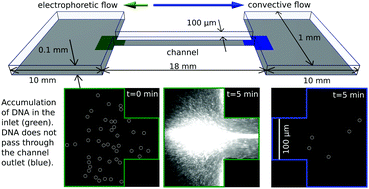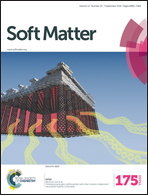Electro-hydrodynamic concentration of genomic length DNA†
Abstract
We report a method of concentrating genomic length DNA within a microfluidic device, using a novel mechanism that combines polyelectrolyte migration with electrophoretic recirculation. Suitable combinations of geometry, pressure and voltage will trap long DNA molecules (>10 kbp) within a small volume (approximately 1 nL), amplifying the local concentration at rates in excess of 1000 fold per minute. The rate at which DNA accumulates is length dependent, while charged particles of similar size pass freely through the device. Experimental observations confirm that the rapid accumulation of DNA at the inlet is caused by an outward migration of the polyelectrolyte towards the capillary boundaries, followed by electrophoresis of DNA within the stagnant fluid layer next to the wall.


 Please wait while we load your content...
Please wait while we load your content...